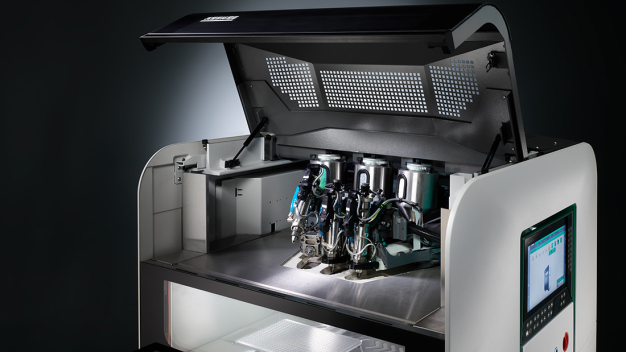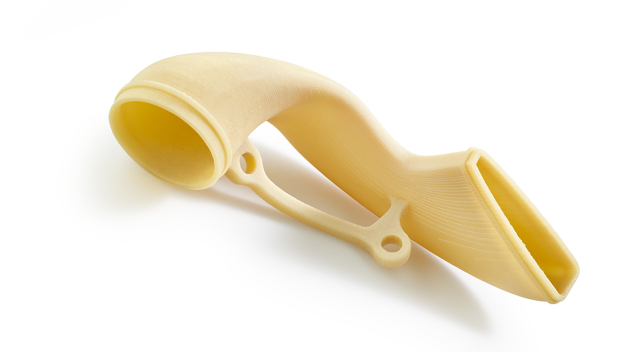- Trade fair
Additive manufacturing: High-temperature Freeformer processes Ultem pellets
Arburg at NPE 2024
– Freeformer 750-3X: Heated build chamber for processing high-temperature plastics such as Ultem 9085
– Wide range of applications: Medical and aerospace components including multi-material combinations
– ARBURGadditive: Comprehensive range of products for industrial additive manufacturing
Arburg's extensive expertise in plastics processing also includes a broad portfolio of products for additive manufacturing from sister company ARBURGadditive. At NPE 2024, a high-temperature version of the Freeformer 750-3X will showcase the 3D printing of high-quality functional components made from Ultem 9085 – a material that is frequently used in the aerospace industry. There will also be a large number of sample components on display, for example for medical technology, electronics and in multi-material combinations.
In addition to high-temperature materials, the Arburg Plastic Freeforming (APF) open system can be used to process a wide range of original and certified plastic pellets with reliable and reproducible results, including into components in multi-material combinations and with functional integration. The Freeformer is also suitable for the fast and cost-effective production of operating equipment and EOAT.
High-temperature plastics processing
At NPE 2024, a high-temperature Freeformer 750-3X will demonstrate how complex functional components can be printed reliably and reproducibly from certified original plastic pellets. For the processing of high-temperature material, the temperature of the build chamber can be raised to up to 200 degrees Celsius; plasticising takes place at a maximum of 450 degrees Celsius.
The high-end machine has three discharge units and, from the outside, is indistinguishable from the Freeformer 300-3X. However, at around 750 square centimetres, the part carrier is around 2.5 times larger. This allows larger functional components to be produced and small batches to be additively manufactured on an industrial scale. A compact melt pressure generator, which produces tiny droplets at a frequency of up to 400 hertz, is used for precise dosing and injection. The result is 3D-printed components that are comparable in quality to injection-moulded parts.
Optimised data processing and seamless documentation
The Gestica control system is optimised for additive manufacturing in terms of process stability, component quality and build time. Based on the slicing data, the system calculates exactly how much material is required to build each individual layer. Variable dosing behaviour helps to reduce the residence time. The result is high-quality components with significantly reduced costs and material usage.
A reproducible and reliable additive manufacturing process is also an essential requirement for the use of additively manufactured functional components in safety-relevant areas. For patient-specific implants and ventilation ducts in aeroplanes, for example, it is imperative that the production parameters for each individual component can be fully documented and traced. To do this, Arburg offers its customisable "ProcessLog" customer portal app, which displays and documents a wide range of process and build job data in a clear graphical format. This significantly reduces rejects and error rates.
Wide range of components
The Freeformer can be used to realise sophisticated designs and complex geometries. Many sample components will be on show at NPE 2024, including products for the aerospace industry. The industrial machine, which is suitable for clean rooms, can also be used in medical technology, for example to produce resorbable implants, breast prostheses and medical devices and aids. Customised multi-material applications such as shoe insoles made of flexible TPE and a hard zone made of PP are also on display. The APF process is also ideal for sophisticated AM parts made from semi-crystalline PP.
ARBURG GmbH + Co KG
72290 Loßburg
Germany










